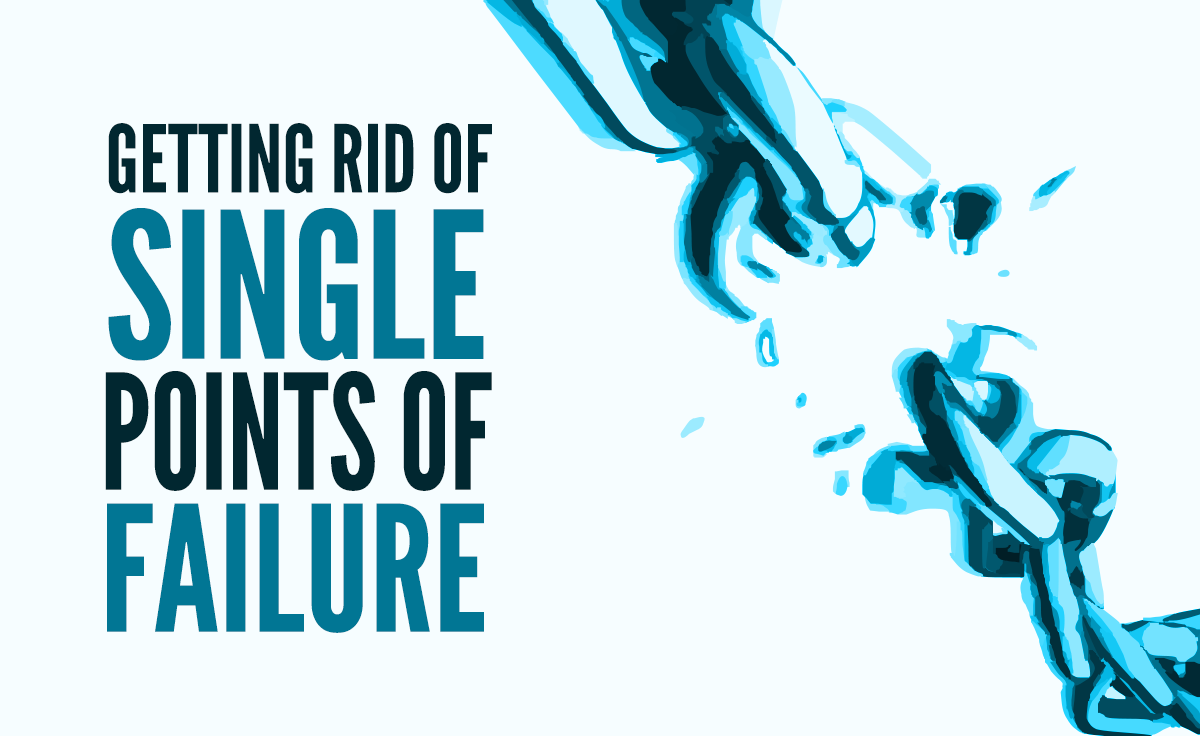Failure is Not an Option: Getting Rid of Single Points of Failure

You might think that your business is going to be OK even if a single device goes down. After all, there are other devices your people can use. It’s not as if the entire system is going to fall like dominoes. Or is it? Get rid of single points of failure to make one vulnerability doesn’t take down your network.
A single point of failure (SPOF) can be a design, implementation, or configuration weakness. Star Wars fans will already be thinking of the Death Star’s ill-designed thermal exhaust port. That was the SPOF Luke Skywalker exploited.
Yet, cybercriminals don’t need the Force to target IT fatal weaknesses. SPOFs for technology include:
- Having only one server that runs an essential application. Without that server, your employees can’t use that particular business tool.
- Solution: Plan for the worst with built-in server redundancy. Have multiples of any hardware that is business critical. Migrate to the cloud so you can continue accessing applications, software, and storage.
- Power outages can wreak havoc on computers and devices operating your network.
- Solution: An Uninterruptible Power Supply (UPS) device can help prevent intermittent power interruptions to your computers, switches, and modems. Cloud solutions reduce the risk of this problem too. Employees can continue to access data and software working at different locations.
- Your physical location could also be the SPOF. What if road closures, fire, floods, or a violent storm prevent you from being able to get to the office? Without a backup, you’ll struggle for business continuity.
- Solution: Pool computer resources in the cloud (servers, storage, applications, and voice services). This provides continued access anywhere, anytime, and often from any device.
- Sorry to say it, but your people could also be your fatal weakness. Perhaps you have one or even two in-house IT experts who know everything about your technology. But, what do you do if they both quit? Or one is sick and the other is on vacation when something goes wrong?
- Solution: You can’t have every person become a subject matter expert on all aspects of IT. So consider outsourced IT.
- You can’t get online without an internet connection. Yet you’re reliant on an external provider for that access. Planned downtime for maintenance is easier to plan around. Still, unexpected issues can cause the internet to go out.
- Solution: Have a backup solution to pick up the slack if the main connection goes down. A router that supports having a 4G modem, for instance, could be a good failover.
Having one device out of commission is frustrating, but not necessarily the end of the world. But, when the damage wrought by a single weakness spreads business-wide, you could face serious consequences.
Downtime for systems failure or data breaches can be:
- Expensive – In addition to potential overtime for IT staff remedying the situation and possible revenue losses, your company may also face fines.
- Time consuming – your people must adapt to a new reality while IT resources are spent trying to get back to business as usual.
- Reputation damaging – any disruption to business as usual could undermine customer trust and prompt churn.
IT professionals understand the danger of SPOF. Avoid weaknesses that can lead to systemwide failures or loss of business information. Partner with computer specialists who can identify and eliminate these vulnerabilities at your business. Contact us today at 818.240.5400!
